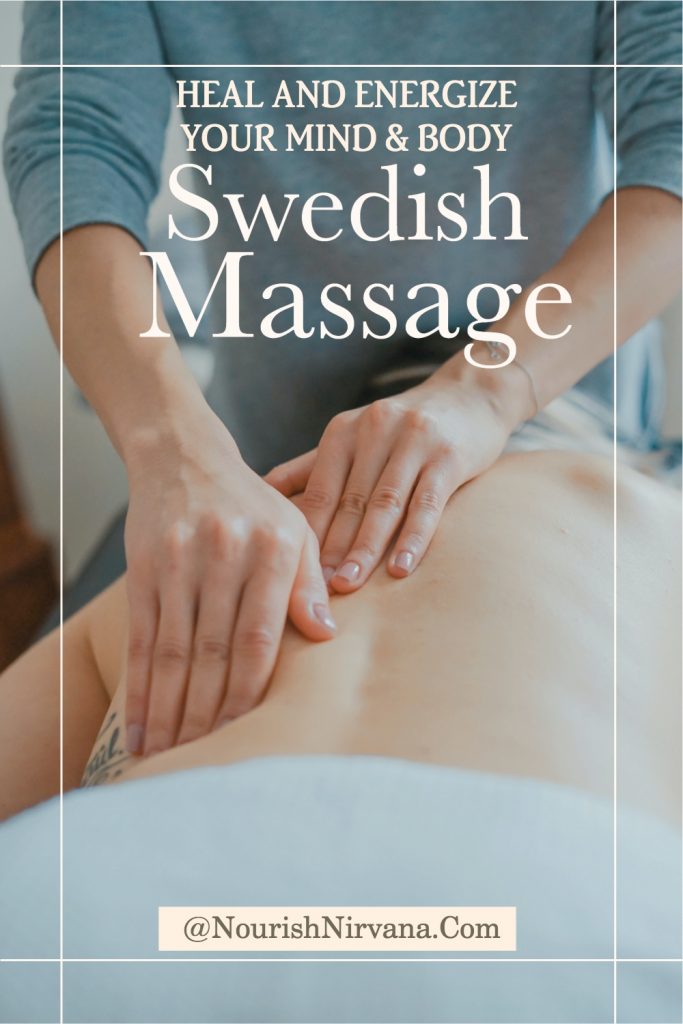Unwinding the Body and Mind: Exploring the Benefits of Swedish Massage
Swedish massage is a classic and popular massage technique that originated in Sweden in the 19th century. It is one of the most commonly offered types of massage therapy, and it’s often the go-to option for people who are new to massage or looking for a relaxing experience. Swedish Massage is a type of massage therapy that is designed to relax the entire body. It involves using long, smooth strokes, kneading, friction, and circular movements on the topmost layers of muscles, usually with oil or lotion. This technique is widely used in spas and massage centers all around the world, owing to its ability to relieve tension and promote relaxation.

History of Swedish Massage
Swedish massage was developed by Per Henrik Ling, a Swedish physiologist, and gymnastics instructor in the early 19th century. Ling studied the anatomy and physiology of the human body and created a system of movements and techniques that he called “Medical Gymnastics.” His system was based on the principles of anatomy, physiology, and massage. Later, Ling’s student Johan Georg Mezger, a Dutch practitioner, adopted Ling’s system and named the five basic strokes of Swedish massage that are still used today: effleurage, petrissage, friction, tapotement, and vibration.
Benefits of Swedish Massage
Swedish massage is primarily known for its relaxing effects. It is designed to promote relaxation and relieve tension in the muscles. Here are some of the benefits of Swedish massage:
1. Reduces Muscle Tension and Pain
Swedish massage can help reduce muscle tension and pain by increasing circulation, promoting relaxation, and breaking up knots and adhesions in the muscles.
2. Improves Circulation
Swedish massage can improve circulation by increasing the flow of blood and oxygen to the muscles. This can help reduce muscle fatigue and improve overall physical performance. This can help to deliver more oxygen and nutrients to the muscles, which can help them to function more effectively.
3. Enhances Mental Well-being
Swedish massage can promote relaxation and reduce stress, which can enhance mental well-being. It can also improve sleep quality, reduce anxiety, and improve overall mood.
4. Relaxation
Swedish Massage is primarily used for relaxation purposes. The long, smooth strokes and gentle kneading movements are designed to promote relaxation and reduce stress.
5. Pain relief
Swedish Massage can help to relieve pain and stiffness in the body. It works by increasing blood flow to the affected areas, which can help to reduce inflammation and ease pain.
6. Increased flexibility
Swedish Massage can help to improve flexibility by loosening up the muscles and joints. This can be particularly beneficial for athletes or people who engage in regular physical activity.
7. Improved immune function
Swedish Massage has been shown to help improve immune function by increasing the number of white blood cells in the body.
Techniques Used in Swedish Massage
Swedish massage uses a variety of techniques to promote relaxation and relieve muscle tension. Here are some of the most common techniques used in Swedish massage:
1. Effleurage
Effleurage is a long, sweeping stroke that is used to warm up the muscles and promote relaxation. The strokes are usually performed with the palm of the hand or the fingertips, and they are performed in the direction of the heart to improve circulation.
2. Petrissage
Petrissage involves kneading, rolling, and squeezing the muscles. This technique is used to break up knots and adhesions in the muscles, and it can help reduce muscle tension and pain.
3. Friction
Friction involves applying pressure to the muscles with the fingertips or the heel of the hand. This technique is used to break up knots and adhesions in the muscles and to promote relaxation.
4. Tapotement
Tapotement involves rhythmic tapping or pounding on the muscles. This technique is used to stimulate the muscles, increase circulation, and promote relaxation.
5. Vibration
Vibration involves shaking or vibrating the muscles. This technique is used to promote relaxation and reduce muscle tension.
What to Expect During a Swedish Massage Session
During a Swedish massage session, you will typically lie on a massage table, and the massage therapist will use oil or lotion to reduce friction on the skin. The therapist will use a combination of the techniques described above to promote relaxation and relieve muscle tension. The massage therapist will use various techniques to massage your entire body, starting with your back and working their way down your arms and legs. You can communicate with the massage therapist if you prefer more or less pressure, and if there are any areas of your body that you want them to avoid. You will usually be draped with a sheet or a towel to maintain your privacy and to keep you warm.
The massage therapist will typically begin with effleurage strokes to warm up the muscles, followed by petr
Preparation for Swedish Massage: If you are planning to get a Swedish Massage, there are a few things you should do to prepare:
- Hydrate: It is important to drink plenty of water before and after your massage to help flush out toxins from the body.
- Avoid heavy meals: It is best to avoid eating heavy meals before your massage as it can make you feel uncomfortable during the session.
- Clothing: You should wear comfortable clothing that allows you to move freely during the massage. Most Swedish Massages are done with the client fully undressed, but you can wear underwear if you prefer.
Conclusion
Swedish Massage is a classic technique that has been used for centuries to promote relaxation and relieve tension in the body. It is a gentle and effective way to improve circulation, reduce pain and stiffness, and increase flexibility. If you are looking for a way to unwind and relax, Swedish Massage is definitely worth a try.
